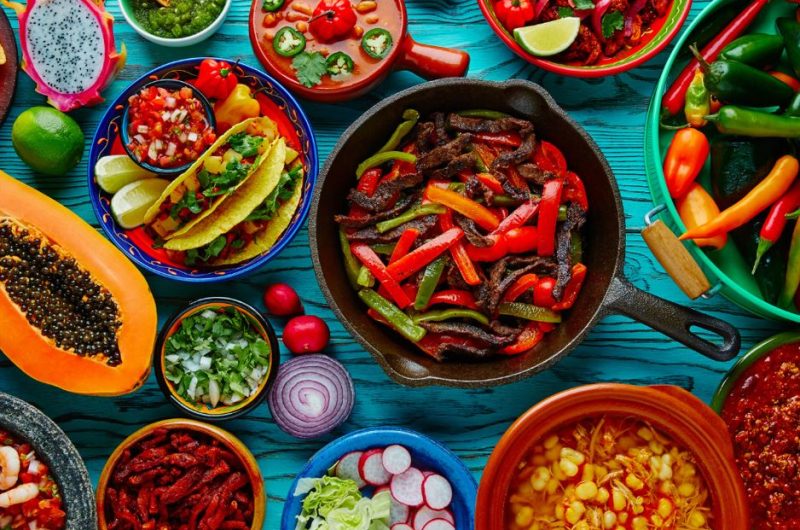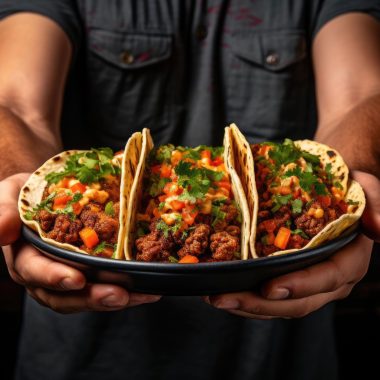Food is viewed as a universal language, transcending borders, cultures, and traditions. Its role extends beyond providing sustenance, reflecting societal values, beliefs, and history. Each society’s identity finds representation in its food culture, a rich source of diversity worthy of celebration and appreciation. Ingredients, food preparation, and consumption patterns reveal a culture’s unique lifestyle.
A complex interplay exists between food and culture, whereby food serves not just a physical necessity, but also operates as a social and cultural construct shaping our identities, beliefs, and values. Our cultural heritage deeply ingrains our eating habits, our choice of food, and our consumption practices. Our food culture, mirroring our history, geography, and social norms, forms an indispensable part of our lives.
Historical events and influences shape food culture, with the diversity traceable to human migration, colonization, and trade. These historical events form the ingredients, cooking techniques, and flavors associated with a particular culture. For example, European colonization contributed to the prevalent use of spices in Indian cuisine, while African slaves’ influence is visible in Brazilian cuisine.
Intersection of Food and Culture
Food and Culture
Food and culture are deeply intertwined, each shaping and reflecting the other in diverse ways. Indeed, food is more than sustenance; it acts as a significant expression of cultural identity, values, and beliefs.Key intersections between food and culture are seen in the use of traditional ingredients and cooking methods. For instance, Mexican cuisine heavily utilizes chili peppers, corn, and beans, while Indian dishes are famed for their spices such as turmeric, cumin, and coriander. These ingredients and spices hold prominence not only for their flavors but also for their cultural symbolism.
Food in Cultural Celebrations and Rituals
Food also assumes a pivotal role in cultural celebrations and rituals. Many cultures use food to commemorate special occasions like weddings, birthdays, and religious festivals. In China, the tradition entails eating dumplings during the Lunar New Year, believed to attract good fortune. Conversely, Thanksgiving in the United States is marked by a customary meal featuring turkey, stuffing, and cranberry sauce. These instances highlight the deep-rooted connection between food and culture, and how they together shape our collective social fabric.
Historical Influence on Food Culture
Food is a reflection of the cultural heritage of a society. The historical and cultural influences on food culture are significant.
Migration and Food
Migration is one of the most significant factors that have influenced food culture throughout history. As people migrated from one region to another, they brought with them their food traditions and cooking techniques. This exchange of food culture led to the creation of new dishes and the adoption of new ingredients, which became a part of the local cuisine.
For example, the migration of the Chinese to Southeast Asia led to the creation of dishes such as Nasi Goreng, a popular Indonesian fried rice dish.
Colonial Impact on Food Culture
Colonialism also had a significant impact on food culture. The colonization of a region often led to the introduction of new ingredients and cooking techniques. For example, the colonization of India by the British led to the introduction of tea, which became an integral part of Indian culture.
Similarly, the colonization of Latin America by the Spanish led to the introduction of ingredients such as tomatoes, potatoes, and chili peppers, which became a part of the local cuisine.
However, colonialism also had a negative impact on food culture. The imposition of European food culture on colonized regions often led to the loss of local food traditions. For example, the colonization of India led to the decline of traditional Indian food practices such as Ayurveda, which emphasizes the use of herbs and spices for medicinal purposes.
In conclusion, historical and cultural influences on food culture are significant. Migration and colonialism have played a significant role in shaping the food culture of different regions. Understanding the historical roots of a culture’s food helps to appreciate the flavors, ingredients, and cooking techniques that are unique to that culture.
Regional Food Cultures
Food culture is most influenced by the locality of its origin, which will have been one of food acquisition and processing by various means. Successful agriculture, horticulture, and aquaculture along with fishing, underpin economically viable and sustainable food systems. The following sub-sections briefly describe some of the regional food cultures.
American Food Culture
American cuisine serves as a melting pot of diverse cultures and traditions, each region boasting its unique food culture. Southern cuisine is famous for its fried chicken, biscuits, and gravy, while Tex-Mex cuisine incorporates chili peppers, cheese, and tortillas.
European Food Culture
European cuisine is characterized by its incredible diversity and richness. Each country and region boasts a unique food culture that distinguishes it from the others. For example, French cuisine, revered globally, is famed for its delectable sauces and pastries. Italian cuisine, another global favorite, finds its strength in pasta and pizza dishes. Mediterranean cuisine, representing countries like Greece and Spain, relies heavily on ingredients like olive oil, fish, and fresh vegetables. In contrast, Northern Europe, including countries such as Germany and the Netherlands, leans towards hearty meat and potato dishes.
Asian Food Culture
Asian cuisine is celebrated for its bold flavors and extensive use of spices and herbs. Chinese cuisine, known for its balance of flavors, frequently incorporates soy sauce, rice, and noodles. Japanese cuisine, is distinguished by its sushi and sashimi dishes, often accompanied by miso soup and pickles. Indian cuisine is unmistakable with its aromatic spices like turmeric, cumin, and coriander, and Thai cuisine captivates with its use of lemongrass, galangal, and chili peppers.
African Food Culture
African cuisine presents a rich diversity that varies by region. Each country and culture carries its unique food traditions. North African cuisine, represented by countries like Morocco and Tunisia, is renowned for its use of couscous, tagine, and harissa. In West Africa, you can find a love for ingredients like peanuts, yams, and plantains. East African cuisine, composed of countries like Ethiopia and Eritrea, stands out with spices like cardamom and cinnamon, while Southern African cuisine, including South Africa and Botswana, is known for its use of maize, beans, and a variety of meats
Food as a Cultural Identity Marker
Cultural identity
Food is an essential aspect of cultural identity. It is a representation of a community’s heritage, history, and values. Traditional foods and recipes serve as a source of pride and connection to one’s cultural heritage, while modern food trends and fusion cuisines reflect the dynamic and evolving nature of cultural identity.
Cultural identity is closely linked to food, and it is used as a marker of identity. For example, the Dawoodi Bohra community uses food as a communal and cultural identity marker. They have a unique cuisine, known as FMB (Fakhri, Mithai, and Biryani), which is an essential part of their religious and cultural practices. The FMB cuisine is not only a way of satisfying hunger but also a way of expressing their cultural identity.
Food can also be used to distinguish between different cultural groups. For example, Mexican cuisine is different from Chinese cuisine, which is different from Italian cuisine. Each cuisine reflects the history, geography, climate, religion, and traditions of the respective culture.
Traditional recipes and cooking methods
food is not only a marker of cultural identity but also a way of preserving it. Traditional recipes and cooking methods are passed down from generation to generation, ensuring that the cultural heritage is not lost.
In conclusion, food is an essential aspect of cultural identity. It serves as a marker of identity, distinguishes between different cultural groups, and is a way of preserving cultural heritage.
Cultural Celebrations and Food
Food plays a significant role in cultural celebrations around the world. It is an essential part of many festivals and ceremonies, from weddings to harvest celebrations. In this section, we will explore the relationship between food and cultural celebrations, focusing on two sub-sections: Festivals and Food and Weddings and Food.
Festivals and Food
Festivals are an important part of cultural identity, and food is often at the center of these celebrations. Different cultures celebrate various festivals throughout the year, and each festival has its unique food traditions.
For example, in the United States, Thanksgiving is a significant festival celebrated on the fourth Thursday of November each year. The traditional Thanksgiving meal includes turkey, stuffing, mashed potatoes, cranberry sauce, and pumpkin pie.
Similarly, in India, Diwali is a festival of lights that is celebrated with great enthusiasm and fervor. During Diwali, people prepare various traditional sweets and snacks like laddoos, barfis, and namak pare.
In addition to these festivals, many cultures also celebrate harvest festivals, such as the Mid-Autumn Festival in China, the Pongal Festival in India, and the Sukkot Festival in Israel. During these festivals, people prepare traditional dishes using the fresh produce of the season.
Weddings and Food
Weddings are another significant cultural celebration where food plays a crucial role. Every culture has its unique wedding traditions, and food is an essential part of these traditions.
For example, in a traditional Indian wedding, the menu may include various vegetarian and non-vegetarian dishes like biryani, butter chicken, and paneer tikka. In contrast, a traditional Chinese wedding may feature dishes like Peking duck, hot and sour soup, and steamed fish.
In addition to the main course, weddings often feature elaborate dessert tables, including cakes, pastries, and sweets. These desserts are often decorated to match the wedding theme and colors.
In conclusion, food is an integral part of cultural celebrations, from festivals to weddings. Each culture has its unique food traditions, and these traditions help to define cultural identity.
Impact of Globalization on Food Culture
Globalization
Globalization has had a significant impact on food culture, leading to both homogenization and diversity. The spread of fast food chains, international cuisine, and fusion dishes has transformed the way people eat and think about food, creating new opportunities for cross-cultural exchange and understanding.
One of the major effects of globalization on food culture is the spread of fast food chains. These chains offer standardized menus and dining experiences that are consistent across the globe, creating a sense of familiarity and comfort for travelers and locals alike. However, this has also led to a loss of local culinary traditions and a homogenization of food culture.
food culture is complex
globalization has also led to the proliferation of international cuisine and fusion dishes. Restaurants and food trucks serving everything from sushi burritos to Korean tacos have become increasingly popular in cities around the world.
However, it is worth noting that the globalization of food has not been without its downsides. Structural shortcomings surrounding infrastructure and labor regulations have led to the exploitation of workers and entire communities in underdeveloped regions. Additionally, the increased availability of unhealthy processed foods has contributed to the rise of diet-related illnesses such as obesity and diabetes.
Overall, the impact of globalization on food culture is complex and multifaceted. While it has led to both homogenization and diversity, it is important to consider the potential negative consequences and work towards creating a more equitable and sustainable food system.
Conclusion
Food is an essential part of culture and identity, reflecting the values, beliefs, and history of different communities. The way people prepare, serve, and consume food can reveal much about their cultural heritage and traditions.
Through food, people can explore and celebrate diversity, learn about different cultures, and build connections with others. Traditional recipes, cooking techniques, and dining etiquette are all vital parts of cultural heritage, passed down from generation to generation.
Regional variations in cuisine are a fascinating journey that reveals how food adapts to local ingredients, climate, and history. Regional specialties are often a result of cultural adaptations that reflect the region’s unique identity.
Food culture expresses identity and meaning, links to dietary patterns, and therefore impacts health and wellbeing.
In conclusion, food is a window into culture and identity, reflecting the values, beliefs, and history of different communities. It is an essential part of cultural heritage, passed down from generation to generation, and plays a significant role in shaping people’s identities and sense of belonging.
FAQ
What is the relationship between food and culture?
Food and culture are deeply intertwined. Food is an essential part of every culture and serves as a representation of its heritage, history, and values. It is a way of expressing oneself, connecting with others, and passing on rich cultural traditions.
How does food reflect cultural identity?
Food reflects cultural identity in many ways. Every culture has its unique culinary traditions that reflect its history, geography, climate, religion, and social customs. The food that people eat, the way they prepare it, and the way they share it with others all reflect their cultural identity.
Why is food an important aspect of cultural heritage?
Food is an important aspect of cultural heritage because it connects people to their past, present, and future. It is a way of passing on traditions and preserving cultural identity. Food is also a way of celebrating life and bringing people together. In many cultures, food is an integral part of religious and social celebrations.
In what ways does food connect people to their cultural roots?
Food connects people to their cultural roots in many ways. It can evoke memories of childhood and family gatherings. It can also be a way of exploring and celebrating cultural identity. Eating traditional foods and learning about their history and significance can help people feel more connected to their cultural heritage.
For more articles in our blog:
https://recipestime.com/taco-bell-enchirito-recipe/






